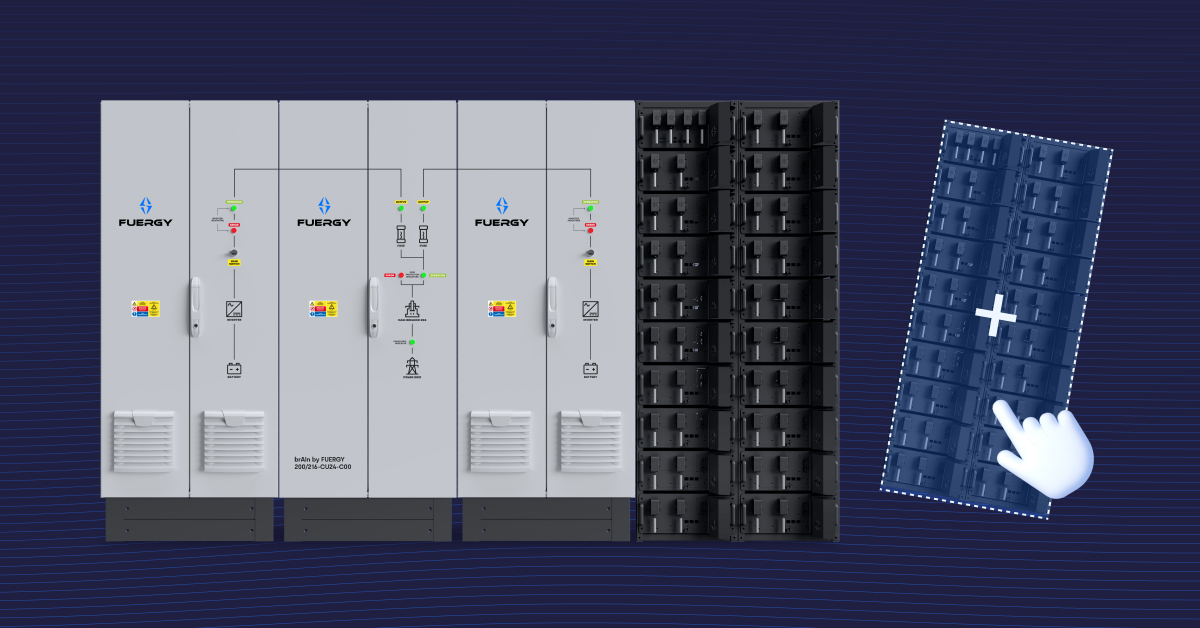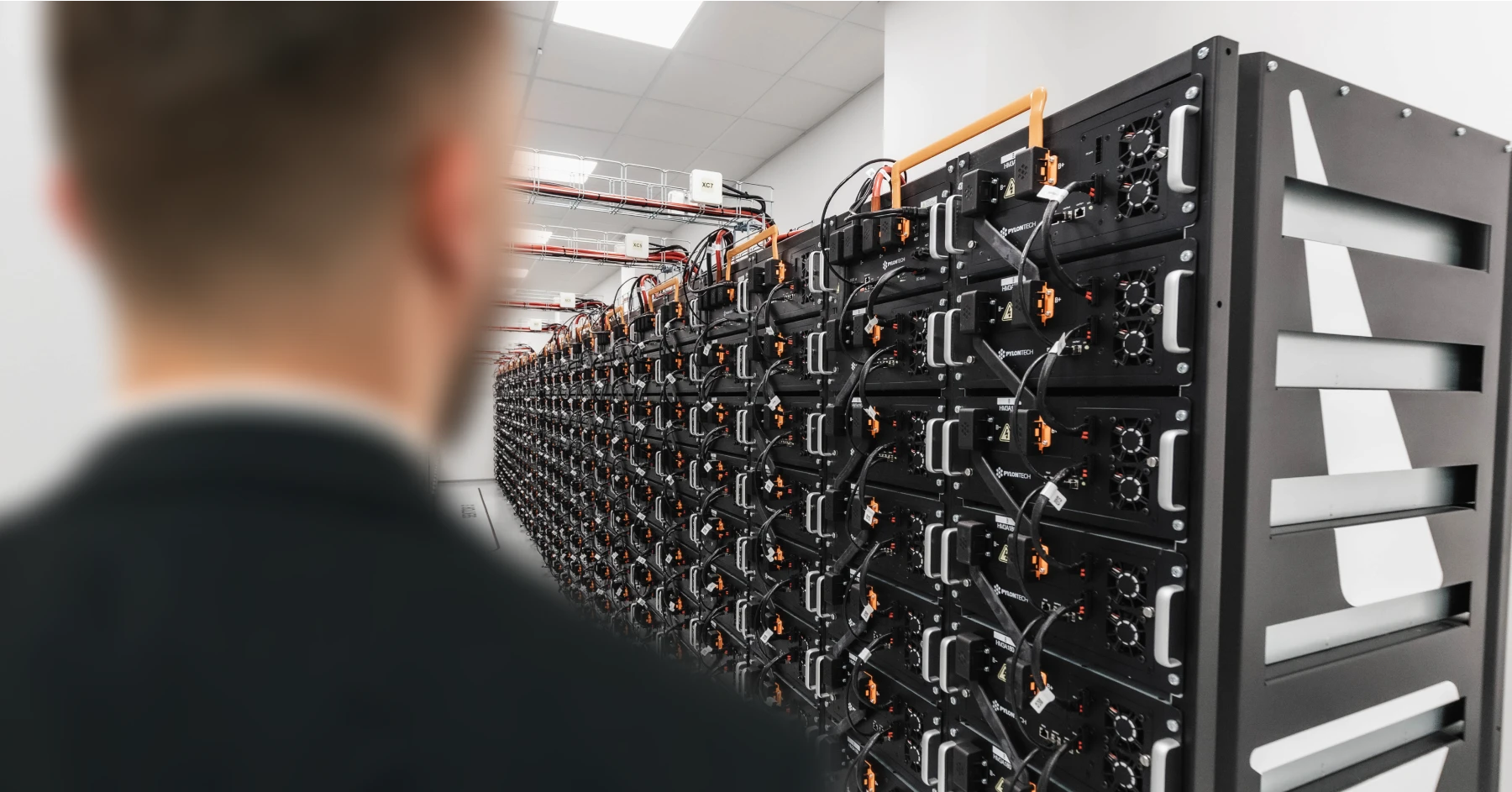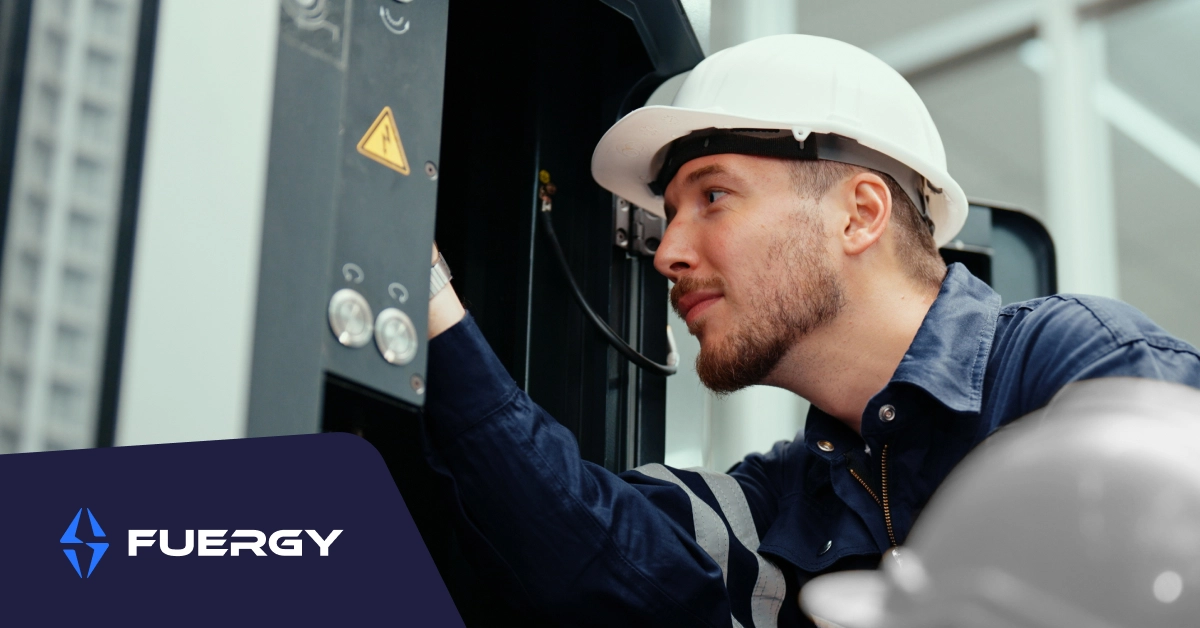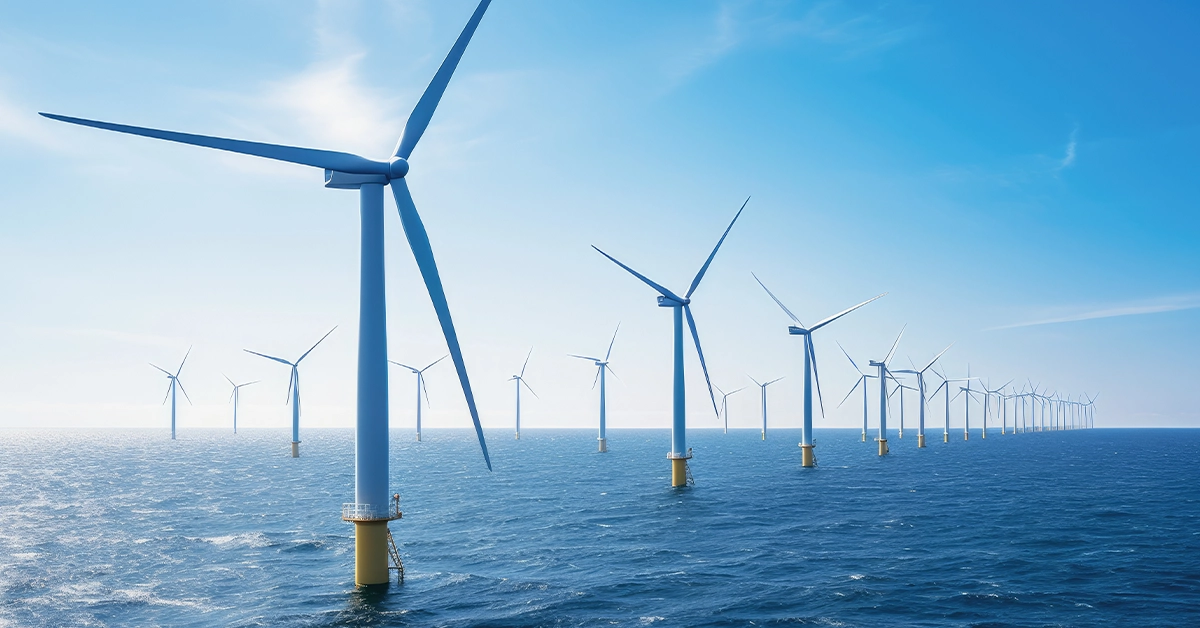
You’ve already seen it, probably not too long ago. If you live in the countryside, you might live near one. The three-bladed, horizontal-axis wind turbine, a distinct, modern symbol of renewable energy and the most common method of wind energy generation.
The modern horizontal-axis wind turbine (HAWT) is designed to provide energy on a commercial or utility level. It is distinguished from other examples of wind energy generation by having its rotors rotate horizontally (similar to a windmill), therefore it must be pointed in the direction of the wind. HAWT generators constitute the overwhelming majority of wind power generation throughout the world as they are efficient, reliable and usually provide the best return on investment.
Past examples of horizontal axis generators include the device built by Charles F. Brush near Cleveland in 1887, the Soviet prototype built near Yalta in 1931 and the Smith-Putnam wind turbine built in Vermont in 1941.
In 1957, Johannes Juul, a former student of Poul la Cour, built a HAWT with a diameter of 24 meters with 3 blades, remarkably similar to the version in use today. The wind turbine had a capacity of 200 kW and used emergency aerodynamic tip breaks. However, the development of wind power largely stalled until the Oil Shocks of the 1970s. In Denmark, a country then exceedingly reliant on energy imports, the resultant energy crisis motivated scientists and engineers into developing new wind turbines. As demand for this form of energy generation grew through the 1980s, the Danish began building ever-larger models, resulting in the modern HAWT which often reaches a height of 65 meters (212 feet) or more. The Danish were also among the first to explore the concept of building coastal or off-shore wind turbines.
As you can see, the off-shore wind turbines can take on huge dimensions.
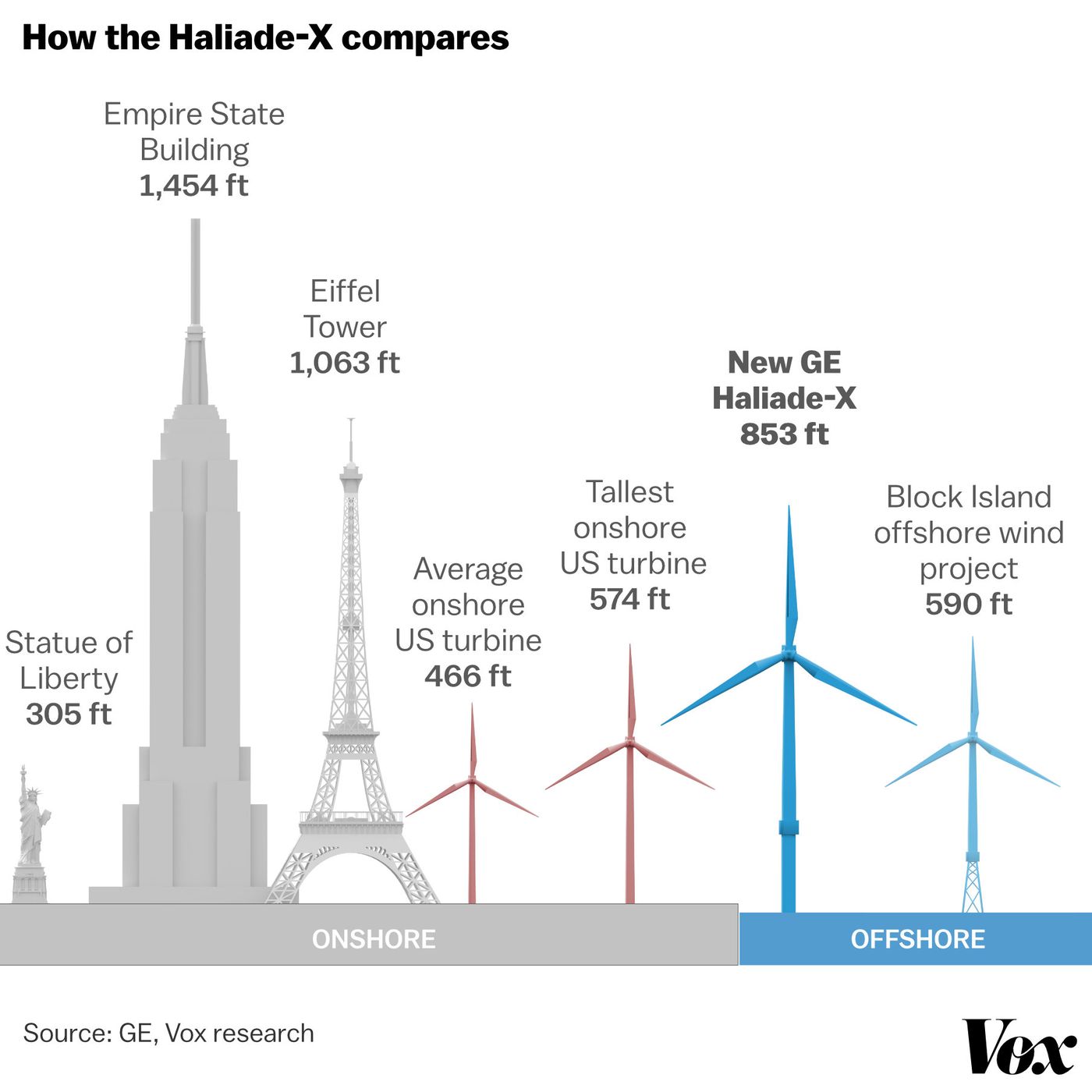
HAWTs convert between a third to a half of kinetic wind energy into electric energy. Issues such as rotor blade friction and drag, gearbox losses, generator and converter losses all reduce the power delivered by a wind turbine. Despite generating renewable energy, HAWTs present a variety of problems for the environment. The turbine’s complexity and the high amount of moving parts mean that regular maintenance is necessary. They are deemed unsightly by some, and they also cause noise pollution in addition to being a hazard for birds. New developments in wind turbine technology seek to answer these issues. Since the inception of the modern HAWT, the tendency has been to push these vertical turbines towards the coastlines and the sea, as they present less of an eye-sore there in addition to being fed a more consistent stream of wind.
Floating wind turbines consist of a HAWT mounted on a floating platform that can be moved at will, allowing wind energy to be harnessed from areas with a deep sea floor that would be unsuitable for construction. They can be moved to improve wind yield, accommodate fishing vessels or shipping routes, or even transported back to the coast for upgrades or more complex maintenance tasks. Hywind, the first commercial floating wind farm was built in 2017 on the coast of Scotland. Its 5 turbines provide a total of 30MW of green energy.

The technology behind floating wind turbines is not revolutionary. Oil rigs have used a similar floating principle to drill oil in deep water. Furthermore, material science and construction technologies have progressed significantly since then.
However, floating turbines do present a few challenges, the biggest of which is the transmission of energy back to the mainland. In cases in which normal transmission of energy would be uneconomical, the energy they produce could be used in different applications, such as power-to-gas applications, producing hydrogen gas, reverse osmosis water desalination, natural gas, LPG, alkylate / gasoline and so on. They can also be used to provide energy for the artificial upwelling of nutrient-rich deep ocean water to the surface, increasing the yields of oceanic fisheries.
Today, off-shore and floating HAWTs cost between 3 to 5 times as much as a land-based tower. This is exacerbated by the higher cost of maintenance caused by their worse accessibility compared to on-shore HWAT. On the other hand, these disadvantages are compensated by higher energy output as the off-shore winds tend to be stronger and more consistent.
In our next article on wind energy, we will explore several new concepts that aim to revolutionize the wind power industry, including ion wind generators, airborne wind turbines and kite generators. To read more about wind energy, other types of renewables or how FUERGY deals with energy optimization and microgrids, do not hesitate to visit our website, subscribe to our newsletter or follow us on social media.
We are living in the future of energy. Are you?
Sources:
energy.gov/eere/wind/how-do-wind-turbines-work
science.howstuffworks.com/environmental/green-science/wind-power2.htm
windpowerengineering.com/business-news-projects/worlds-first-floating-wind-farm-delivers-promising-results
awea.org/wind-101/history-of-wind/2000s
renewableenergyworld.com/ugc/articles/2014/11/history-of-wind-turbines.html

